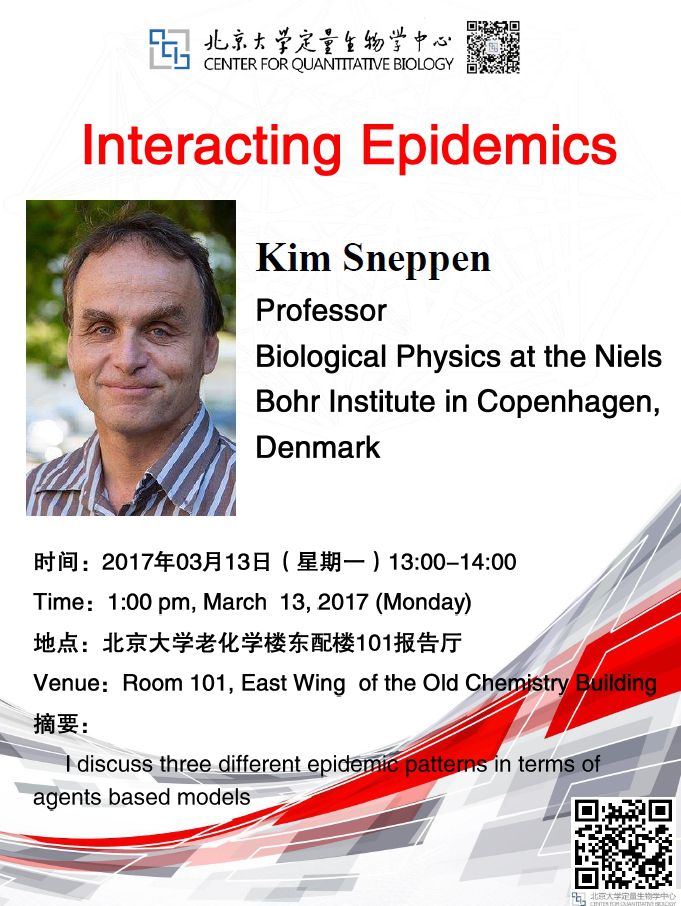北京大学定量生物学中心
学术报告
题 目: Interacting Epidemics
报告人: Prof. Kim Sneppen
Biological Physics at the Niels Bohr Institute in Copenhagen, Denmark
时 间: 2017-3-13(周一), 13:00-14:00
地 点: 北京大学老化学楼东配楼一层101报告厅
主持人: 汤超 教授
摘要:
I discuss three different epidemic patterns in terms of agents based models.
1) Epidemics of different diseases leaves imprints in the immune system of their host. This indirect interaction between epidemics can be modeled by hosts individual immune memories. This allow us to explain the lack of overall proliferation of influenza virus and explain their apparent "aging". We predict that your chance to get the next influenza depends primarily on the imprint of previous epidemics in your immune memory.
2) The seasonality of many recurrent respiratory diseases is an on-going mystery. We suggest that this can be understood by a short lived non-specific immunity among the hosts.This non-specific immunity mediates a repulsion between the epidemics.
3) Many pathogens can spread among hosts of different species. We introduce an extension of the classical epidemic model and discuss how cross spreading between species might lead to particular serious epidemics.
报告人简介:
Kim Sneppen, Professor in Biological Physics at the Niels Bohr Institute in Copenhagen, Dennmark. PhD in theoretical Nuclear Physics from 1989. Experience from research in complex and biological systems, with focus on describing these through mathematics and physics. Published articles within evolution, punctuated equilibrium, self-organization, dynamics of transcription on DNA, translation traffic of mRNA, small RNA regulation, gene regulatory circuits, epigenetics, networks, information distribution, phage biology, phage-bacteria ecosystems, cellular automata for biological competition and diversity. Have the last 9 years been leader of the Center for Models of Life, financed by a generous center of excellence grant from the Danish National Research Council.
